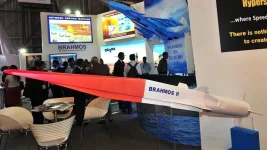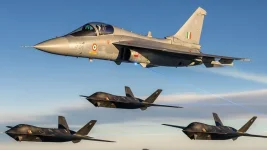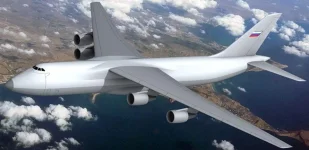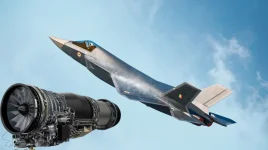- Views: 7K
- Replies: 8
In a significant move to enhance the nation's air defence capabilities, India's Cabinet Committee on Security (CCS), chaired by the Prime Minister, has officially approved the acquisition of six advanced Netra Mk2 Airborne Early Warning and Control (AEW&C) aircraft.
The project, valued at approximately ₹19,000 crore, will provide the Indian Air Force (IAF) with a critical edge in airborne surveillance and battle management.
The new systems will be integrated onto pre-owned Airbus A321 passenger jets sourced from Air India, with the first aircraft expected to be delivered by 2033.
Developed indigenously by the Defence Research and Development Organisation’s (DRDO) Centre for Airborne Systems (CABS), the Netra Mk2 represents a major technological leap.
Unlike the current Netra Mk1 systems which offer 240-degree radar coverage, the new Mk2 version will feature a more powerful Gallium Nitride (GaN) based Active Electronically Scanned Array (AESA) radar.
This advanced system will provide 300-degree surveillance through a combination of a large dorsal antenna and a secondary nose-mounted radar, greatly improving the aircraft's ability to detect and track threats from a greater distance.
India currently operates a modest fleet of three Netra Mk1 jets and three Israeli Phalcon AWACS platforms.
The six former Air India A321 aircraft will undergo a complex transformation into military-grade platforms.
Initially, the jets will be sent to an Airbus facility in Spain, likely Madrid, for extensive structural modifications.
This process involves strengthening the airframe to handle the weight and stress of the radar systems and installing auxiliary power units to support the power-hungry electronics.
Following this, the aircraft will return to India where CABS and other domestic partners will integrate the sophisticated mission systems.
This includes the indigenous AESA radar, electronic support and self-protection suites, and secure communication links.
Once operational, the Netra Mk2 will act as a flying command post, capable of detecting hostile aircraft, drones, and even ballistic missiles, while directing friendly fighter jets.
This procurement addresses a critical vulnerability in India's air defence network, which was highlighted during the 2019 aerial engagement with Pakistan following the Balakot airstrike.
The IAF's limited number of surveillance aircraft is in stark contrast to its neighbours. Pakistan operates a fleet of 13 AEW&C aircraft, including nine Swedish Saab 2000 Erieye systems and four Chinese ZDK-03 platforms.
More significantly, China has deployed over 30 advanced AWACS, such as the KJ-500, near the Indian border, giving its forces a decisive advantage in situational awareness.
The addition of the Netra Mk2 is designed to counter this imbalance by enabling the IAF to maintain persistent surveillance over vast areas of interest.
The CCS approval for the Netra Mk2 is part of a broader, two-pronged strategy to rapidly expand the IAF’s surveillance fleet.
In March 2025, the Defence Acquisition Council (DAC) had already cleared the purchase of six Netra Mk1A aircraft. This upgraded version of the existing Netra system will be fitted onto second-hand Embraer EMB-145 jets.
While technologically less advanced than the Mk2 and retaining 240-degree coverage, the Netra Mk1A project has a much shorter timeline, with deliveries expected to be completed within five years.
This will provide the IAF with a much-needed immediate boost while the more capable Mk2 systems are being developed.
Together, these two projects will add 12 new indigenous AEW&C aircraft to the IAF's inventory, nearly tripling its current fleet by the mid-2030s.
This comprehensive approach balances immediate needs with the development of long-term, self-reliant capabilities.
The experience gained from the Netra Mk2 project is expected to pave the way for an even more advanced system, the Netra Mk3, which aims to provide 360-degree radar coverage and further reduce India's dependence on foreign military technology.




